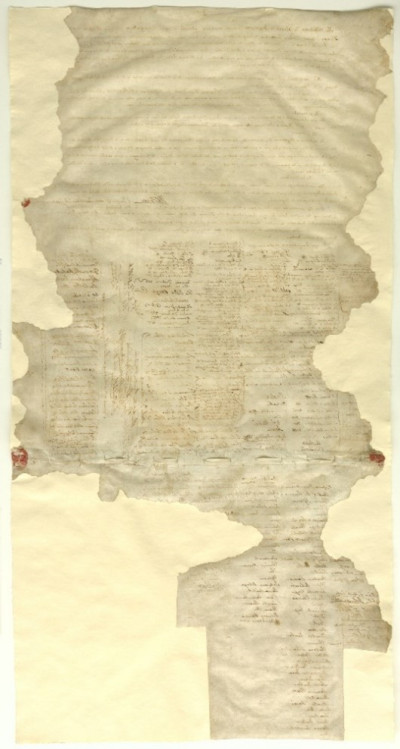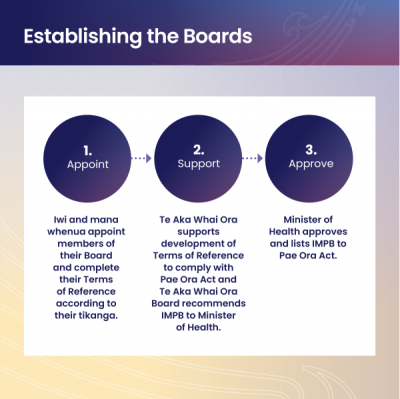Māori hub
This content provides various forms of consumer, whānau and community-focused health information, knowledge and resources with a te ao Māori perspective for all users of the health system.
This content provides various forms of consumer, whānau and community-focused health information, knowledge and resources with a te ao Māori perspective for all users of the health system.
Click the links below to go to the relevant section of this page:

Te Rua Mahara o te Kāwanatanga | Archives New Zealand: https://www.flickr.com/photos/archivesnz/15858996150/in/album-72157640803885745/
‘Te Tiriti o Waitangi is an agreement made in 1840 between representatives of the British Crown and more than 500 Māori chiefs. It resulted in the declaration of British sovereignty over New Zealand by Lieutenant-Governor William Hobson in May 1840. Most chiefs signed a Māori-language version of the treaty. The English- and Māori-language versions held different meanings, and Māori and Europeans therefore had different expectations of the treaty’s terms. Ever since, resolution of these differences has presented New Zealand with challenges.’ Te Ara – The Encyclopaedia of New Zealand
Read more here: https://teara.govt.nz/en/treaty-of-waitangi/page-1
‘The principles of Te Tiriti o Waitangi, as articulated by the Courts and the Waitangi Tribunal, provide the framework for how we will meet our obligations under Te Tiriti in our day-to-day work. The 2019 Hauora report recommends the following principles for the primary health care system. These principles are applicable to the wider health and disability system. The principles that apply to our work are as follows.
The principle of equity, which requires the Crown to commit to achieving equitable health outcomes for Māori.
The principle of active protection, which requires the Crown to act, to the fullest extent practicable, to achieve equitable health outcomes for Māori. This includes ensuring that it, its agents and its Treaty partner are well informed on the extent and nature of both Māori health outcomes and efforts to achieve Māori health equity.
The principle of options, which requires the Crown to provide for and properly resource kaupapa Māori health and disability services. Furthermore, the Crown is obliged to ensure that all health and disability services are provided in a culturally appropriate way that recognises and supports the expression of hauora Māori models of care.
The principle of partnership, which requires the Crown and Māori to work in partnership in the governance, design, delivery and monitoring of health and disability services. Māori must be co-designers, with the Crown, of the primary health system for Māori.’ Manatū Hauora | Ministry of Health
Read more here: https://www.health.govt.nz/our-work/populations/maori-health/he-korowai-oranga/strengthening-he-korowai-oranga/treaty-waitangi-principles
How do the articles of Te Tiriti o Waitangi underpin this quality and safety marker (QSM)?
The articles of Te Tiriti o Waitangi were actively engaged with at every step of the QSM’s development. The descriptors contained within each rating were developed with a Te Tiriti lens in mind (eg, understanding experiences of whānau and acting on these experiences, having a workforce reflective of your population, broad involvement of the community).
The 2020 Te Tiriti framework is one interpretation of how to further apply a Te Tiriti lens to the consumer engagement QSM and will assist when providing examples of upholding the articles of Te Tiriti at a local level. For instance, examples of active engagement with tangata whenua and demonstrating a partnership approach are more likely to be rated as a ‘partnership and shared leadership’ activity for an area if the example uploaded can demonstrate an authentic partnership. An organisation which understands and upholds the principles of Te Tiriti is more likely to demonstrate strong consumer engagement. This particular interpretation was informed by Ministry of Health guidance and the recommended principles of the Waitangi Tribunal Health Services and Outcomes Inquiry (WAI 2575).
Read the Te Tiriti framework here: https://www.hqsc.govt.nz/assets/Consumer-hub/Publications-resources/20200818_TeTiriti_framework_draft_Nov2020.pdf
This document is an interpretation of the Te Tiriti framework, completed by the Commission's consumer network: https://www.hqsc.govt.nz/assets/Consumer-hub/Publications-resources/Te-Tiriti-framework-with-consumer-network-feedback-Feb-2021.docx
The Pae Ora (Healthy Futures) Act 2022 created a new health system structure and accompanying accountability arrangements with the intent to protect, promote and improve the health of people in Aotearoa New Zealand.
Click here to read the Act: https://www.legislation.govt.nz/act/public/2022/0030/31.0/LMS575405.html
‘Health care delivery in Aotearoa New Zealand is transforming. For the better. At the heart of our new health system is Te Aka Whai Ora.
He tangata, he tangata, he tangata!
Our focus will be to create a new health system focused on people – on patients, on communities and on our kaimahi/health care workers.
Our role is to lead and monitor transformational change in the way the entire health system understands and responds to the health and wellbeing needs of whānau Māori.’
- Te Aka Whai Ora | Māori health Authority: https://www.teakawhaiora.nz/

Reproduced with permission from Te Aka Whai Ora
The establishment of Iwi–Māori partnership boards is integral to Te Aka Whai Ora | Māori Health Authority engaging with whānau and hapū in their rohe. Read more: https://www.teakawhaiora.nz/our-work/iwi-maori-partnership-boards/
‘First Iwi–Māori Partnership Board announced
The establishment of Iwi–Māori Partnership Boards (IMPBs) is a fundamental part of the transformed health system. IMPBs will play an important role in working with other organisations to determine health and wellbeing priorities for their local areas. They will engage with whānau about local health needs and share insights with the Māori Health Authority and Health New Zealand, and other health entities.
The membership of other Iwi–Māori Partnership Boards will be confirmed over the next few months ahead of their formal establishment on 1 July this year.’
- Te Anamata o te Oranga | Future of Health: https://www.futureofhealth.govt.nz/assets/Uploads/Documents/People-Panui/People-Panui-22-April-2022.pdf
‘As New Zealand’s Māori Health Strategy, He Korowai Oranga sets the overarching framework that guides the Government and the health and disability sector to achieve the best health outcomes for Māori.’
- Manatū Hauora | Ministry of Health: https://www.health.govt.nz/our-work/populations/maori-health/he-korowai-oranga
Read the plan here: https://www.health.govt.nz/system/files/documents/publications/mhs-english.pdf
‘Whakamaua: Māori Health Action Plan 2020–2025 is the implementation plan for He Korowai Oranga, New Zealand’s Māori Health Strategy – it will help us achieve better health outcomes for Māori by setting the government’s direction for Māori health advancement over the next five years.’
- Te Manatū | Ministry of Health: https://www.health.govt.nz/publication/whakamaua-maori-health-action-plan-2020-2025
‘As New Zealand’s Māori Health Strategy, He Korowai Oranga sets the overarching framework that guides the Government and the health and disability sector to achieve the best health outcomes for Māori.’
- Manatū Hauora | Ministry of Health: https://www.health.govt.nz/our-work/populations/maori-health/he-korowai-oranga
Read the plan here: https://www.health.govt.nz/system/files/documents/publications/mhs-english.pdf
‘Whakamaua: Māori Health Action Plan 2020–2025 is the implementation plan for He Korowai Oranga, New Zealand’s Māori Health Strategy – it will help us achieve better health outcomes for Māori by setting the government’s direction for Māori health advancement over the next five years.’
- Te Manatū | Ministry of Health: https://www.health.govt.nz/publication/whakamaua-maori-health-action-plan-2020-2025
‘The changes being made to our health system include a new national approach to improve how healthcare is delivered in communities. This is called a locality – a place-based approach to improving the health of populations, as well as a mechanism for organising health and social services to meet the needs identified by whānau, community and mana whenua.’
Read more about localities here: https://www.futureofhealth.govt.nz/about-the-reforms/how-health-system-changing/localities/
Localities Update for the Health Sector – April 2022
Over the next two years, the locality approach will gradually roll out across the country. The first priority will be given to areas with high Māori and Pacific populations.
To read the full April 2022 update, click here: https://www.futureofhealth.govt.nz/assets/Uploads/Documents/Localities-update-for-the-Health-Sector-April-2022.pdf
Wairoa announced in first locality pilots of health reforms
‘Hawke’s Bay District Health Board is delighted Wairoa has been named as one of the first locality planning networks as part of the upcoming health reforms which will take effect on 1 July 2022.’
First Iwi–Māori Partnership Board announced
‘The establishment of Iwi–Māori Partnership Boards (IMPBs) is a fundamental part of the transformed health system. IMPBs will play an important role in working with other organisations to determine health and wellbeing priorities for their local areas. They will engage with whānau about local health needs and share insights with the Māori Health Authority and Health New Zealand, and other health entities.
The membership of other Iwi–Māori Partnership Boards will be confirmed over the next few months ahead of their formal establishment on 1 July this year.’
- Te Anamata o te Oranga | Future of Health: https://www.futureofhealth.govt.nz/assets/Uploads/Documents/People-Panui/People-Panui-22-April-2022.pdf
‘The changes being made to our health system include a new national approach to improve how healthcare is delivered in communities. This is called a locality – a place-based approach to improving the health of populations, as well as a mechanism for organising health and social services to meet the needs identified by whānau, community and mana whenua.’
Read more about localities here: https://www.futureofhealth.govt.nz/about-the-reforms/how-health-system-changing/localities/
Localities Update for the Health Sector – April 2022
Over the next two years, the locality approach will gradually roll out across the country. The first priority will be given to areas with high Māori and Pacific populations.
To read the full April 2022 update, click here: https://www.futureofhealth.govt.nz/assets/Uploads/Documents/Localities-update-for-the-Health-Sector-April-2022.pdf
Wairoa announced in first locality pilots of health reforms
‘Hawke’s Bay District Health Board is delighted Wairoa has been named as one of the first locality planning networks as part of the upcoming health reforms which will take effect on 1 July 2022.’
First Iwi–Māori Partnership Board announced
‘The establishment of Iwi–Māori Partnership Boards (IMPBs) is a fundamental part of the transformed health system. IMPBs will play an important role in working with other organisations to determine health and wellbeing priorities for their local areas. They will engage with whānau about local health needs and share insights with the Māori Health Authority and Health New Zealand, and other health entities.
The membership of other Iwi–Māori Partnership Boards will be confirmed over the next few months ahead of their formal establishment on 1 July this year.’
- Te Anamata o te Oranga | Future of Health: https://www.futureofhealth.govt.nz/assets/Uploads/Documents/People-Panui/People-Panui-22-April-2022.pdf